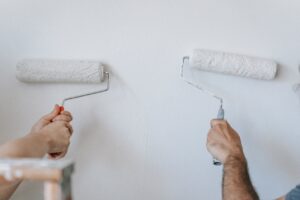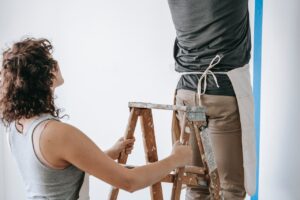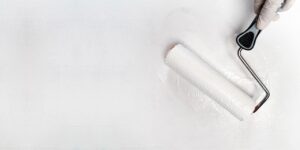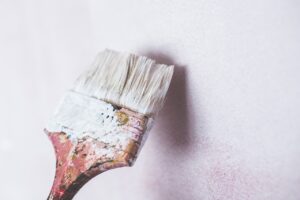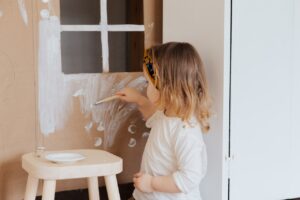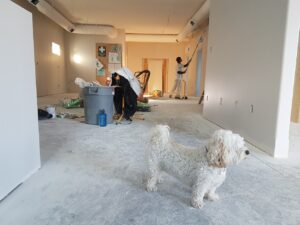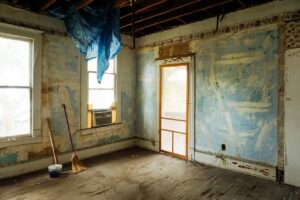
How To Maintain Your Exterior House Painting For Long-Lasting Results
Introduction: The Importance Of Regular Maintenance For Exterior House Painting Regular maintenance is crucial to maintain the longevity and appearance of the exterior house painting. Over time, harsh weather, UV rays, and environmental factors can cause the paint to fade, crack, or peel, leaving the house vulnerable to damage. However, by implementing simple maintenance practices, homeowners can prevent or fix any issues that may arise and keep their home’s exterior looking fresh and attractive. In this article, we will explore the dos and don’ts of maintaining the exterior house painting for long-lasting results. Inspect Your Home’s Exterior Regularly Inspecting your home’s exterior regularly is an essential part of maintaining a long-lasting exterior house painting. The harsh weather conditions and everyday wear and tear can cause paint to fade, crack, or peel. Inspecting your home’s exterior will help you identify any damage or potential issues that need addressing, such as chipped or cracked paint, water damage, or mold growth. Regular inspections will also enable you to address any problems promptly, preventing them from worsening and becoming more costly to repair. It’s best to inspect your home’s exterior at least once a year, ideally in the spring or fall, when the weather is mild. Clean Your Home’s Exterior Surface Cleaning the exterior surface of your home is essential to maintaining the longevity and appearance of your exterior house painting. Dirt, grime, and pollutants can accumulate on the surface and break down the paint over time, leading to premature fading and wear. Cleaning the surface at least once a year using a pressure washer or a soft-bristled brush and a mild detergent can help remove dirt and grime without damaging the paint. Avoid using harsh chemicals or abrasive tools that can scratch or strip the paint off the surface. Additionally, it’s essential to clean up any spills or stains on the painted surface as soon as possible to prevent them from setting in and becoming more challenging to remove. Address Any Issues Promptly When it comes to maintaining your home’s exterior painting, it’s essential to address any issues promptly. This means fixing any chips, cracks, or peeling paint as soon as you notice them. Ignoring these issues can lead to more significant problems in the future, such as water damage or rot. To address these issues, start by scraping away any loose or peeling paint, sanding the area, and filling in any gaps or cracks with putty or caulk. Once the area is dry, you can then apply a coat of primer and paint to match the surrounding area. By taking care of any issues promptly, you can extend the life of your exterior paint job and prevent more significant problems from occurring. Repaint Or Touch Up As Needed Even with regular maintenance, exterior paint will eventually start to fade, chip, or peel. When this happens, it’s time to repaint or touch up the affected areas. If you notice small areas of damage, such as chipped paint or minor cracks, you may be able to simply touch up the affected areas with new paint. However, if a large portion of the paint is damaged or peeling, a full repaint may be necessary. It’s important to use the same type and color of paint that was originally used on your home’s exterior to ensure a seamless finish. If you’re unsure about the type of paint that was used, consult with a professional painter or take a sample of the existing paint to a paint store for analysis. When repainting, make sure to properly prep the surface by cleaning and sanding the area to ensure proper adhesion. Applying a primer before the new coat of paint can also help to ensure a long-lasting finish. Regularly repainting or touching up your home’s exterior paint can help to extend its lifespan and keep your home looking fresh and well-maintained. Protect Your Home’s Exterior From Environmental Factors Aside from regular cleaning, addressing issues promptly, and repainting as needed, it is also important to protect your home’s exterior from environmental factors that can cause damage and wear and tear on your paint job. One way to protect your home’s exterior is to trim trees and bushes around your home. This not only keeps your home looking neat and tidy, but it also prevents branches and leaves from scratching or damaging your paint job. Another way to protect your home’s exterior is to ensure that your gutters are functioning properly. Clogged gutters can cause water to overflow and damage your siding, trim, and foundation. Lastly, consider adding a clear coat or sealant over your paint job. This extra layer of protection can help prevent fading, chalking, and other types of wear and tear caused by exposure to sunlight and weather. By taking these steps to protect your home’s exterior, you can help ensure that your paint job lasts as long as possible and looks great for years to come. Conclusion: Maintaining Your Exterior House Painting For Long-Lasting Results Regular maintenance is key to ensuring that your exterior house painting lasts for many years. By inspecting your home’s exterior regularly, cleaning the surface, addressing issues promptly, repainting or touching up as needed, and protecting your home from environmental factors, you can keep your home looking beautiful and well-maintained for years to come. Remember to use high-quality paint and hire a professional if you’re unsure about how to maintain your home’s exterior. With the right care and attention, your exterior house painting can provide long-lasting, durable results that will make your home look great for years to come. Our Experts’ Take Experts generally agreed upon that regular maintenance is crucial for the longevity of an exterior house painting job. Neglecting to maintain the paint can lead to costly repairs or premature repainting. By following the tips outlined in the article, homeowners can help ensure their exterior painting lasts for many years to come. https://www.youtube.com/watch?v=fHBSa333AY0https://www.youtube.com/watch?v=_5bPTOrmpAE Do You Need A Professional House Painting Team You Can Trust? Refresh your home and space with


